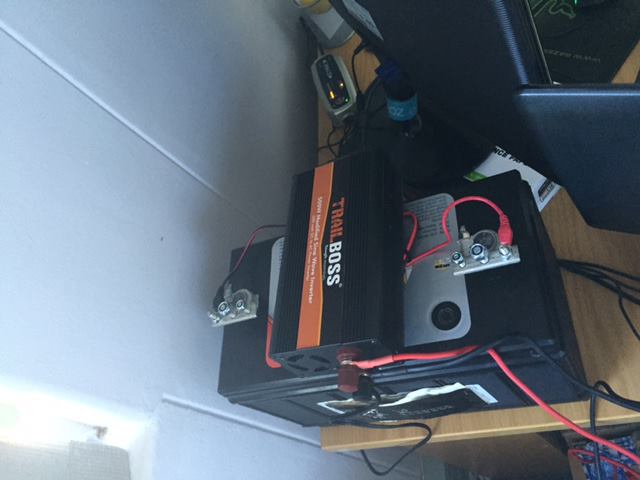It has amazed us that since the load shedding started, so many people have been enquiring on the internet about what they can do. Questions about generators, UPS systems, inverters and so the list goes down. Our director published an article on his blog about generators, but since doing so we’ve learnt a great deal more and were advised that a generator might not be the best idea from a sound and current point of view. Because of this we started to investigate inverters and the lack of simple information around them.
We were told that Outdoor Warehouse would be a good place to have a look – this after spending several hours trying to find somewhere in Cape Town to go to. A trip down to Outdoor Warehouse had us leaving with all the goods we need. Now, there’s unfortunately a lot of technical information about all of this and we’re digital marketers, not electricians but we’ll try to share what we learnt.
There are 3 components:
- An inverter (See the range we bought)
- A battery (See the range we bought)
- A battery charger (See the range we bought)
The battery charger plugs into the wall via a 2-prong plug and then connects to the battery. As you might have guessed, the charger charges the battery and should be left connected to the battery at all times. The inverter is then connected to the battery, the job of the inverter is to convert battery current into normal current – in other words, transfer the power from the battery to your device. So, we have the charger connected to the battery which is connected to the inverter which is connected to your device. From an inverter point of view, the easiest way to look at this is the wattage – if a laptop draws 130watts of current and a router draws 20watts of current, you’re looking at 150watts of current and therefore require a 150watt inverter. The size of the battery determines how much up time you have once the electricity goes out and the size of the charger determines how quickly you can charge the battery – it’s these two things that are a bit more complicated to work out and not being professionals we would prefer not to make an attempt at explaining.
In the photograph below you can see the battery charger at the top in the middle as well as the inverter on top of the big battery.

If you do things carefully this set up can do a great deal for you. For starters, we run our Internet off a WiFi router which draws roughly 20watts. Then, everyone in the offices runs on a laptop, so when the electricity goes off our laptops will have an hour or two of up time. Instead of just plugging everything into the inverter, we’ll rotate laptops keeping them juiced but still under the 500w threshold of the inverter. You can get much bigger inverters, but the price increases quite heavily as you move up each level, instead see if you can rotate laptops as we plan to do.
Some side notes:
- If you run off desktops, you’ll need a larger inverter because the electricity draw from a desktop is substantially higher and less reliable because a computer has it’s own power supply.
- Remember to check what each piece of equipment in our office draws in watts – the sum of this shows the maximum concurrent wattage required and that’s how you determine the size of inverter you require.
- Batteries are expensive because they’re semi-deep cycle batteries, not high cycle car batteries.
- An inverter that is turned on draws current, so keep it off when you aren’t experiencing load shedding.
If you have any questions, please pop us a comment below and we’ll do our best to assist you with what we’ve learnt.
